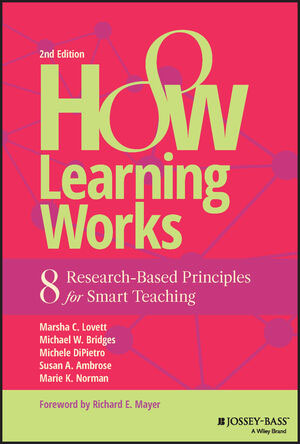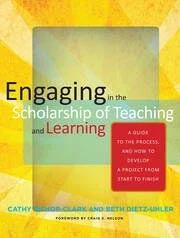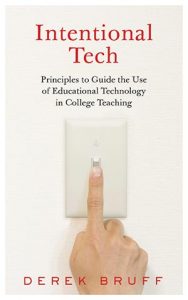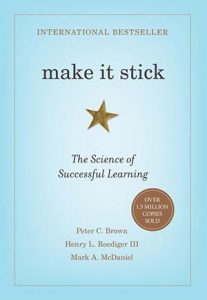Checking on Students’ Progress
Sometimes faculty feel pressure to cover as much content as we can in the amount of time we have. This pressure is often referred to as the “tyranny of content.” But when we’re racing to cover every topic, we may unintentionally create conditions in which it’s difficult for students to really learn, and we may not pause to check on whether they’re learning what we hope they will.
Finding out what students are (or are not) learning helps us determine whether our teaching methods are working. Students also need to know whether they’re “getting it,” so they can adjust what they are doing to learn. In the book How Learning Works, Lovett et al. explain that learning happens through a cycle of practice and feedback: students practice, we observe their performance, and they receive our feedback in time to apply it to their next attempt.
Fortunately, many of the same activities we use to facilitate learning can also be used to monitor whether students are making the progress we hope to see. Opportunities for practice and feedback don’t have to be big projects or exams; they can be low-stakes activities and assignments that happen in or out of class. A few examples include in-class polling, in-class writing activities, self-assessments, low-stakes quizzes, homework assignments, and drafts or pieces of larger projects.
Whatever the method, by this time in the semester, students should be getting formative feedback on their work. In the beginning of a course, students learn fundamental concepts and skills that they will need to build on all semester, so it’s an important time for them to get a sense of how it’s going. It’s also not too late to recover if they’ve gone off track, or even if they’re totally lost. It’s much better for students to find out now what they are and are not getting, and what they can do to improve, rather than later on a high-stakes exam. In fact, we can design with opportunities to recover in mind by assigning less weight to work that comes early in the course.
When we provide feedback early in the semester (or any time), it’s important to think about what we want students to use it to do next. For example, are we trying to help them analyze problems in a new way? What kind of feedback will help them improve on their next attempt? (And of course, we need to make sure there is a next attempt, so that they have an opportunity to apply the feedback.)
Focusing more on what we want students to use our feedback to do can also help us communicate in a motivating way. We can explain: these are the things you’re doing well and should continue, and these are the important priorities to work on in your next attempt. Giving students the opportunity to apply the feedback makes it all the more important that they read (or listen to) and understand it. If they skip over it, or don’t really understand it, they won’t be able to apply it. For this reason, some colleagues like to make reading and responding to feedback a low-stakes assignment. They ask students to 1) summarize the feedback in their own words, 2) respond to it/compare it to their own sense of how they did, and 3) make a plan for how they will apply it to their next attempt. This small intervention not only makes it much more likely that students will read our feedback, it also gives us rich information about how they interpret it.
If you’d like some support to build low-stakes opportunities for practice and feedback into your course, we would be happy to help! You can email us at pro-teaching@fsu.edu to schedule a consultation. We look forward to working with you!
2024 FALL FACULTY READING GROUPS
This semester the Center for the Advancement of Teaching is offering the following faculty reading groups. Each group will meet once a week for three weeks to discuss the books in sections. We hope you can join us! Please register here.

Fridays: 9/20, 9/27, 10/04
1:00–2:30 p.m.
Dirac Science Library Conference Room
Print copy, delivered through interoffice mail
The newly updated edition of this important book translates decades of scientific literature into practical advice, introducing eight general principles of how people learn. The authors draw on cognitive, developmental, and social psychology, as well as educational research, anthropology, etc. The discussion spans issues from memory to motivation, integrating theory with real classroom examples. Participants will develop strategies for strengthening their own teaching through the application of these principles.

Tuesdays: 9/24, 10/01, 10/08
1:00–2:30 p.m.
432 Diffenbaugh
Print copy, delivered through interoffice mail
Most of our preparation for teaching (both our training and our planning) focuses on the content and the thinking students need to do, but Sarah Rose Cavanagh reminds us that learning is a highly emotional process. Anxiety and fear hamper learning, while powerful positive emotions can enhance it. Cavanagh offers concrete strategies for harnessing the power of emotion to galvanize learning.

Thursdays: 9/26, 10/03, 10/10
1:30–3:00 p.m.
204A LOV
Print copy, delivered through interoffice mail
Even if you’re not familiar with the scholarship of teaching and learning (SOTL)—a form of classroom research that can be done by faculty in any discipline—you may already be doing it. When you spot an issue in your teaching, generate a possible solution, and collect student data to see if the solution works, you’re engaging in SoTL informally. In this reading/working group, participants will learn approaches to doing SoTL more formally so that they can share their findings with a wider audience. In addition to learning about the process of doing SoTL, participants will actually get to engage in that process by designing a hypothetical or real project with support from the group. Beginners are very welcome!

Wednesdays: 10/09, 10/16, 10/23
1:30–3:00 p.m.
Dirac Library Conference Room
Print copy, delivered through interoffice mail
Intentional Tech: Principles to Guide the Use of Educational Technology in College Teaching by Derek Bruff explores how educators can thoughtfully integrate technology into their teaching practices to enhance student learning. Bruff provides practical strategies and real-world examples that emphasize intentionality and pedagogical purpose. Whether you’re a tech enthusiast or a cautious adopter, Intentional Tech offers valuable perspectives to help you navigate the evolving landscape of educational technology. Let’s gather, discuss, and discover new ways to make our teaching more intentional and impactful with educational technology. Note: AI tech was intentionally used in producing this blurb!

Fridays: 10/11, 10/18, 10/25
1:00–2:30 p.m.
Dirac Library Conference Room
Print copy, delivered through interoffice mail
In Make It Stick: The Science of Successful Learning, Brown, Roediger, and McDaniel assemble the most important current research on learning, to deliver “highly effective, evidence-based strategies to replace less effective but widely accepted practices that are rooted in theory, lore, and intuition.” It turns out that much of our intuition about learning is misleading; this book group will focus on using the research to develop more effective learning strategies for our classrooms.



